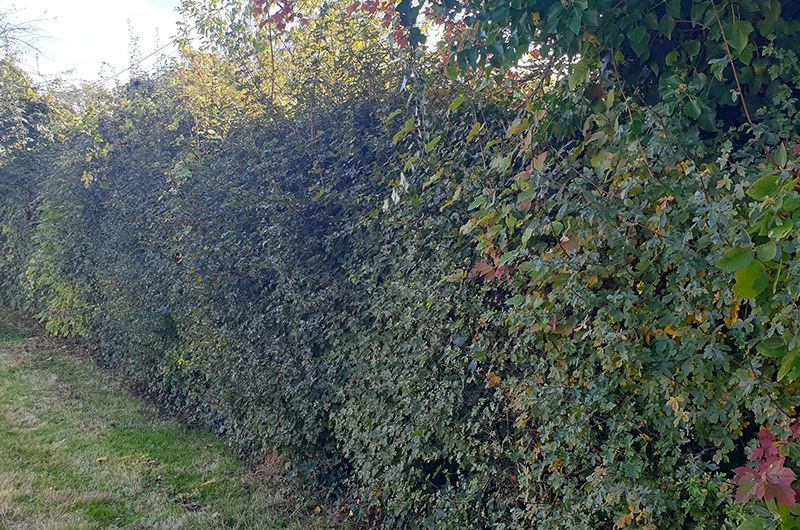Mixed Native Hedgerow
Meet one of NESBiP’s Big 5, Mixed Native Hedgerow Species. Although not currently typical of North East Scotland, they certainly could be. Sadly, hedgerows are of conservation concern. They provide habitat and food for many struggling species (like the hedgehog!). Not only are they fantastic for wildlife, but they also benefit communities and livestock.
We asked local hedgerow champion, Doug Gooday, what he loves about hedges and why and how they need our protection. Check out his answers below.
What are mixed native hedgerows, and why are they locally important?
A mixed native hedge is made up of tree and shrub species that are naturally found in the region: in the North East of Scotland, suitable species include hawthorn, blackthorn, hazel, rowan, guelder rose, elder, cherry, dog rose, bramble and honeysuckle. Beech, though popular for hedging, is not considered native to the North East, nor is field maple, which is often supplied in hedging mixes sold by English tree nurseries. For a stock-proof hedge, at least 60% of the plants should be hawthorn.
In an agricultural landscape such as we have in the North East, hedges provide shelter and homes and create vital habitat connectivity. This allows small mammals, birds, insects and other invertebrates, and also plants, to move and spread to other areas. Hedges rich in flowering trees and shrubs provide a valuable nectar and pollen source for pollinators, and berry and nut bearing species provide food for birds and small mammals in autumn and winter.
What can people do locally to protect mixed native hedgerows?
Plant more native hedges and encourage others, including Local Authorities, to do the same. Maintain existing hedges in a suitable state for wildlife by appropriate management, such as pruning, coppicing or hedge-laying every 7 – 10 years or so. A good wildlife hedge should have a wide base, 3m or so.
When is the best time to take action for mixed native hedgerows?
Planting can take place in October and November, and hedge maintenance from September through to March.
Your top 3 tips for protecting mixed native hedgerows
- Educate and raise awareness amongst the public, landowners and land managers of the value of hedges.
- Don’t machine-cut a hedge at the same height each year, as this will lead to gaps in the base of the hedge.
- Check hedge condition every few years and replant gaps with berry-bearing species.
What is your favourite fact about hedgerows?
Hedges have probably been a part of the British landscape since farming began during the Neolithic period.
Do you have any good examples people could learn from?
Yes, the Aden Country Park hedge, which was planted in November 2024. Read more here.
This is also an excellent case-study from the Nature-Friendly Farming Network – Bringing hedgerows back: Practical approaches from Scotland’s nature-friendly farmers

People’s Trust for Endangered Species
A short video taken from a hedge planting session at Aden Country Park

Doug Gooday
Independent Member at NESBiP and Hedgerow Champion

